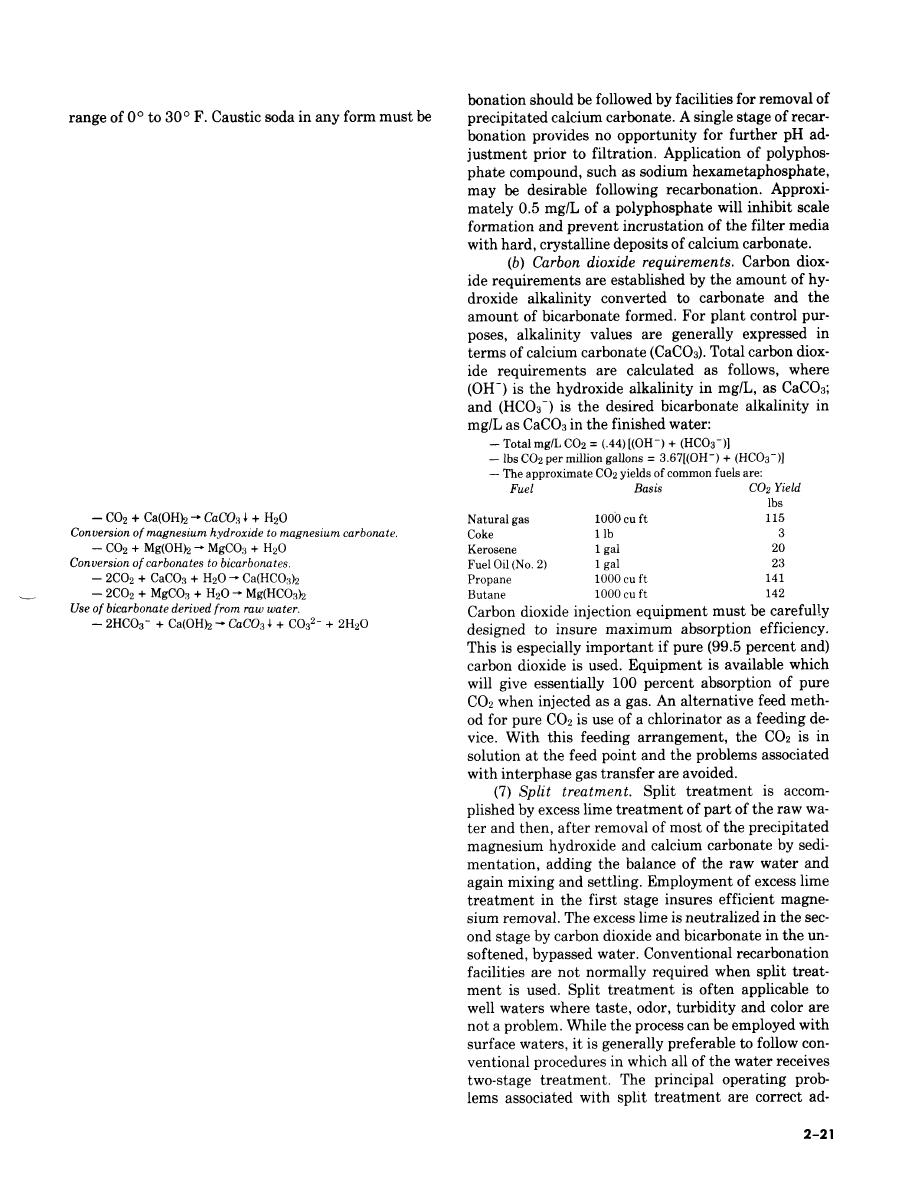
TM 5-813-3/AFM 88-10, Vol 3
strength which has a freezing point in the approximate
viewed as a hazardous substance, capable of causing
serious burns. Personnel responsible for handling and
feeding the chemical must understand its potentially
dangerous nature, know what precautions should be
taken and be supplied with appropriate protective
clothing, safety showers, etc.
(6) Recarbonation. Recarbonation involves the in-
troduction of carbon dioxide and/or bicarbonate ion
into softened water for the purpose of neutralizing ex-
cess hydroxide alkalinity and relieving calcium carbon-
ate and magnesium hydroxide supersaturation. Car-
bon dioxide should either be purchased as liquefied
carbon dioxide, which must be stored at the plant in a
refrigerated storage tank, or generated at the water
treatment plant by the combustion of coke, oil, or gas.
Recarbonation can also be achieved by utilizing carbon
dioxide and bicarbonate available in the raw water.
This is the "split" treatment process.
(a) Chemical reactions. The following reactions
illustrate the chemistry of the recarbonation process:
Neutralization of excess lime.
The above reactions are accompanied by important
changes in the pH of the softened water, and the pH
value is used as a recarbonation control parameter. Re-
carbonation can be practiced in a single-stage or two-
stage configuration. If recarbonation is accomplished
in two stages, the first stage is devoted to neutraliza-
tion of most of the excess lime. This involves conver-
sion of excess lime to calcium carbonate and a pH
change from about 11 to approximately the 9.5-10
range. Following the first stage of recarbonation, the
water must be flocculated and settled to remove excess
calcium carbonate. Coagulant such as silica, starch,
polymer or ferric sulfate may be employed to assist in
coagulation and settling of the calcium carbonate par-
ticles. The second stage of recarbonation, usually just
ahead of filtration, serves principally as a "trim" stage
in which final pH adjustments are made, as necessary.
Guidance as to the correct pH can be obtained through
calculation of the saturation index (see para 2-12c).
For softened waters of low alkalinity, a plus index is
generally advisable. Carbon dioxide added in the sec-
ond stage converts carbonates to bicarbonates. If only
a single stage of recarbonation is employed, the carbon
---
dioxide feed must be adjusted so that the previously
described reactions take place to the extent necessary
at the single point of recarbonation. Single stage recar-


 Previous Page
Previous Page
